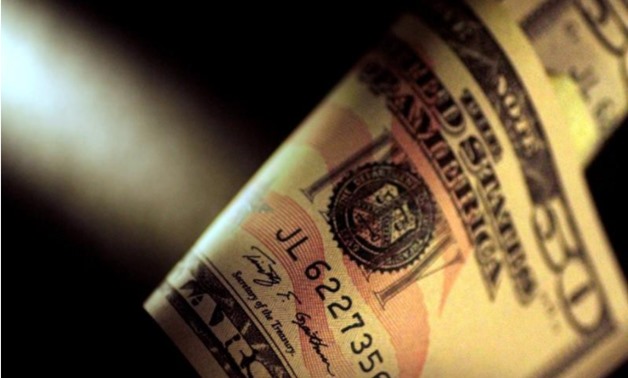
A U.S. Dollar note is seen in this June 22, 2017 illustration photo - REUTERS/Thomas White/Illustration/File Photo
TOKYO – 16 November 2017: The dollar was on the defensive on Thursday as doubts for the prospects of U.S. tax reforms, a fall in U.S. stocks, and declining high-yield bond prices all soured the mood, offsetting an uptick in underlying U.S. inflation.
The dollar index .DXY stood at 93.891, after having fallen to as low as 93.402 on Wednesday, its weakest in almost four weeks, a severe correction from the uptrend that began in early September on hopes of a tax cut deal.
A U.S. Senate Republican tax plan drew fire from two Republican lawmakers on Wednesday in a possible sign of trouble for the sweeping measure, given the party can afford to lose no more than two votes to pass the legislation.
“For the moment, the U.S. tax cuts will be the main theme of the markets. I would expect negotiation to drag on beyond the year-end but by the first quarter of next year, there will be a deal,” said Yukio Ishizuki, senior strategist at Daiwa Securities.
U.S. stocks and junk bonds, which had also rallied on hopes of tax cuts and the prospects of a solid U.S. economic growth, extended their losses, further dampening dollar sentiment.
U.S. S&P 500 .SPX fell to a three-week low while the yield on junk bonds rose to their highest in 7 1/2 months.
“The markets that have benefited from buying by investors looking for yield enhancement are now crumbling while safe-haven assets are being bought. The sensitivity to risk seems to have been heightened,” said Kazushige Kaida, head of foreign exchange at State Street Bank.
Any boost to the currency from positive U.S. consumer inflation and retail sales data was not strong enough to ease those concerns.
Annual core inflation accelerated to 1.8 percent in October after having stayed at 1.7 percent USCPFY=ECI in the preceding five months. Retail sales increased 0.2 percent.
Both beat market expectations slightly and further firmed up the case for a December rate hike by the Federal Reserve. But beyond this year, U.S. interest rate futures were pricing in a slightly smaller chance of a rate hike early in 2018 than before Wednesday’s data.
With the dollar facing headwinds, the euro traded at $1.1778 EUR=, down slightly on the day but up almost 1 percent so far on the week, after having risen to as high as $1.1862 on Wednesday, its best level in over one month.
The dollar dipped to 112.47 yen on Wednesday and fetched 113.04 yen JPY= in late Asian trade.
The Australian dollar bounced from near five-month lows on Thursday as a mostly upbeat local employment report triggered a round of short-covering.
The Aussie traded at $0.7594, almost flat on the day, after having plumbed a low of $0.7567 AUD=D4, a trough last seen in late June.
Against the yen, the Aussie hit a three-month low of 85.52 yen AUDJPY=R, having posted its largest daily loss since mid-August the day before.
The New Zealand dollar edged down to $0.6857 NZD=D4, near its 5 1/2-month low of $0.6818 touched last month.


Comments
Leave a Comment